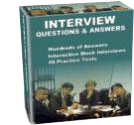Although earthquakes can have
catastrophic effects, they can also
reveal a great deal about the earth�s
internal structure.
(more content follows the advertisement below)
A D V E R T I S E M E N T
The shock waves arising
from earthquakes pass through the interior of
the earth in different ways and provide the
evidence about the inaccessible interior
regions of the earth. Several kinds of wave
motions (P and S waves) produced by the
earthquakes are of a class called body waves
because they travel through the solid body of
the earth. Body waves are distinguished from
surface waves, which move along the free
upper crust of the earth. Surface waves are of
two types; they travel more or less together,
but with different motions . One type
consists of Rayleigh waves, named after the
English physicist, Lord Rayleigh. They can be
visualised as water waves travelling across the
surface of a still pond after a pebble has been
tossed into the water. The second type of
surface waves is the Love wave, named after
the physicist A.E.H. Love. Motion in the Love
wave is entirely horizontal, at right angles to
the direction of wave motion.
The waves travel at different rates from a
common source. Therefore, time interval
between their arrival at the recording station
will also vary. Besides, the density of rocks and
nature of the medium, whether solid or liquid,
through which the P and S waves pass, also
affect the propagation of waves. Based on
these observations, the earth�s interior has
been divided into three layers � crust, mantle
and core .
THE EARTH�S CORE
Study of seismogram (a seismograph record)
has confirmed the existence of a spherical core
at the earth�s centre and has added insights
into its physical nature. In case the earth were
entirely solid, both P and S waves would travel
through in all directions. The body waves of
any large earthquake could be recorded
directly opposite its focus. It was, however,
found that there is a region on the globe
opposite the earthquake focus where S waves
are not received. That means, the S waves
cannot pass through the central part of the
earth because this part is made of a medium
which is not solid. Physicists have proved
through experiments that S waves cannot be
sent through a liquid medium. This proves that
the earth�s core is in liquid state in contrast to
the surrounding mantle which is solid.
The seismic waves bend as they travel
through the core and therefore, P waves are
not directly received in a zone, known as
shadow zone, between 1030 and 1430 distant
from the focus. Also, S waves are not received
there because they do not travel through the
liquid core. Only surface waves are received in
this shadow zone. Beyond 1430 only P waves
passing through the core and surface waves
travelling along the surface are received. From
the extent of the shadow zone, the earth�s core
is calculated to have a radius of 3,470 km, a
little more than half the earth�s total radius.
THE EARTH�S MANTLE
The P waves make abrupt drop in velocity at
the mantle-core boundary, whereas S wave
terminates at the mantle-core boundary.
Thus making a plane of discontinuous
surface between the core and the
mantle known as Gutenberg discontinuity.
Through the earth�s mantle, upto nearly 2,900
km, the speed of earthquake waves is so high
that only a very rigid and dense rock will
satisfy the observed conditions. Solid or rigid
in this case means either crystalline or glassy.
It also means that, when subjected to the
sudden twists and bends of earthquake waves,
the rock behaves as an elastic solid, that is, it
changes shape when shear stresses are
applied, but returns exactly to its former
shape when those stresses are removed. Thus,
the mantle consists of solid rock.
Based on the behaviour of seismic waves,
the mantle is sub-divided into two major parts
� the upper mantle and the lower mantle. The
upper mantle, extending from the crust to a
depth of about 650 km, includes the
asthenosphere, which occupies the upper 300
to 400 km. Rocks in the asthenosphere behave
as both a plastic solid and an elastic solid. The
matter possessing these remarkable
properties is an elastic-viscous substance �
it can be elastic and plastic at the same time,
depending on whether the forces that tend to
deform it are applied and released suddenly or
steadily. The presence of the soft layer or
plastic layer in the upper part of mantle was
suspected as far back as 1926 by
distinguished seismologist Beno Gutenburg.
He noticed that earthquake wave velocities are
slowed down below 150 km, after first
increasing rapidly from the surface to that
depth. This region is referred to as the lowvelocity
zone.
THE EARTH�S CRUST
The crust is distinguished from the mantle by
the presence of abrupt change in the velocity
of seismic waves. This corresponds to the
abrupt change in rigidity of the rock from crust
to mantle. The change in rigidity in turn is due
to change in mineral composition or in
physical state of the rocks. The P waves near
the surface travel at about 6 km per second
and this velocity increases gradually or
abruptly to the base of the crust, where it is
7 km per second. The surface of sudden
increase in wave velocity, which separates the
crust above from the mantle below, is the
Mohorovicic discontinuity, also called
Moho discontinuity or M discontinuity. It is
named after the Yugoslav seismologist,
Mohorovicic, who first recognised the
discontinuity in 1909.
|


 |
|